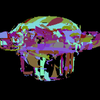


An avid reader, computer graphics fan and atmospheric jungle beats enjoyer.
Demoscene: cce/Peisik.
This profile is from a federated server and may be incomplete. Browse more on the original instance.


An avid reader, computer graphics fan and atmospheric jungle beats enjoyer.
Demoscene: cce/Peisik.
This profile is from a federated server and may be incomplete. Browse more on the original instance.